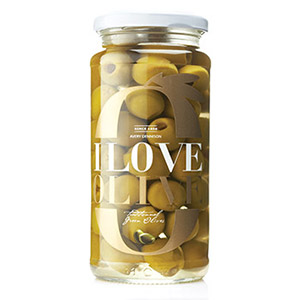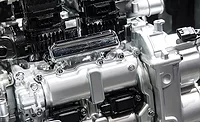FAQs about Pressure-Sensitive Adhesives (PSAs)
Brands and label converters must consider several factors when choosing a pressure-sensitive adhesive for their application.
Brands and label converters must consider several factors when choosing a pressure-sensitive adhesive (PSA) for their product application—from cost and sustainability to performance to design. With these considerations come plenty of questions. For example, are some PSA labels more eco-friendly than others? Does the thickness of an adhesive matter? Following are the answers to some of the most common questions about PSAs.
sustainability to performance to design. With these considerations come plenty of questions. For example, are some PSA labels more eco-friendly than others? Does the thickness of an adhesive matter? Following are the answers to some of the most common questions about PSAs.
How do PSAs work?
PSAs are adhesives that bond to a substrate surface with little or no energy. Unlike solvents and hot-melt adhesives, which use chemical or mechanical processes to achieve adhesion, only firm pressure is needed to create a cohesive bond between the PSA and substrate. This makes them ideal for labels, tapes and graphic signage.
What are the different types of PSAs?
Adhesives generally fall into one of three families:
1. Repositionable (low adhesion)—An adhesive that adheres immediately. If a label is misapplied, however, it can be removed cleanly from a container within a window of time, allowing a new label to be applied.
2. Removable (low to moderate adhesion)—An adhesive that can be easily removed without damage to the label or substrate.
3. Permanent (high adhesion)—An adhesive that is hard to remove and causes destruction of the label or substrate when removal is attempted.
Based on the product application, brand owners may need an adhesive that falls into more than one category, such as a removable, repositionable adhesive.
Can one PSA work with any application?
Unfortunately, no; there’s a reason there are more than 300 different PSAs in the adhesives industry. Specific applications require label developers to create PSAs with specific performance properties, which can be achieved using several basic components.
What components are used to make a PSA?
All PSAs are built on either a rubber or acrylic base, combined with a specific adhesive technology. There are four basic types of adhesive technology: emulsions, solvents, hot melts and UV-hot melts.
By putting these components together in different combinations, label developers can customize an adhesive to deliver the right mix of durability, flexibility, thickness, adhesion and other performance traits when the adhesive is applied to a liner and facestock. Examples include a removable acrylic emulsion PSA or a permanent rubber-based solvent PSA.
How do I choose an adhesive for my product application?
Selecting the proper adhesive is essential to the success of the label in each application. Understanding the environment and use of the label helps label developers and converters identify the correct adhesive for the application. Some factors to consider include:
• Facestock—What type of facestock is being used?
• Adhesive—What type of adhesive is needed (e.g., permanent, repositionable, etc.)?
• Substrate—What will the adhesive need to stick to?
• Application conditions—In what conditions will the label be applied?
• Exposure conditions—In what conditions will the label be used?
Why does the substrate affect which adhesive can be used on it?
The adhesion strength of a PSA is dependent on several factors. First is the surface energy, or the amount of molecular force in the surface material it is applied to. High-surface-energy materials tend to be smooth and clean; these include metals, painted surfaces, dry glass and certain plastics (e.g., HDPE, PET and polypropylene). Waxy, soft and oily materials such as Teflon, rubber and silicone have a low surface energy.
Most PSAs bond best when they can “wet out,” or spread on a surface. However, low-surface-energy materials reduce the adhesive’s wet-out ability. In these cases, converters must use a more aggressive adhesive (e.g., a solvent or hot melt) to bond to a low-surface-energy substrate, whereas an emulsion (i.e., a water-based adhesive) works better with high-energy substrates.
The shape and texture of a product container affects what PSA properties are needed to achieve good adhesion. A container that is bumpy or porous might require one set of adhesive properties, while a smoother, larger container may require another set. In either case, adhesives can be adapted to maximize adhesion to the product’s surface area and texture.
Are PSAs environmentally friendly?
Although PSAs aren’t recyclable themselves, different adhesives offer various sustainable benefits for the end user. For example, many emulsion PSAs enable labels to be easily removed during recycling, which helps packaging reclaimers yield more recycled material for remanufacturing.
Solvents, on the other hand, are harder to remove but require less energy than a hot melt, as well as less water than an emulsion. UV- and standard hot melts also eliminate the need for a label liner, thus reducing liner waste.
For more information, visit http://label.averydennison.com.
Looking for a reprint of this article?
From high-res PDFs to custom plaques, order your copy today!



